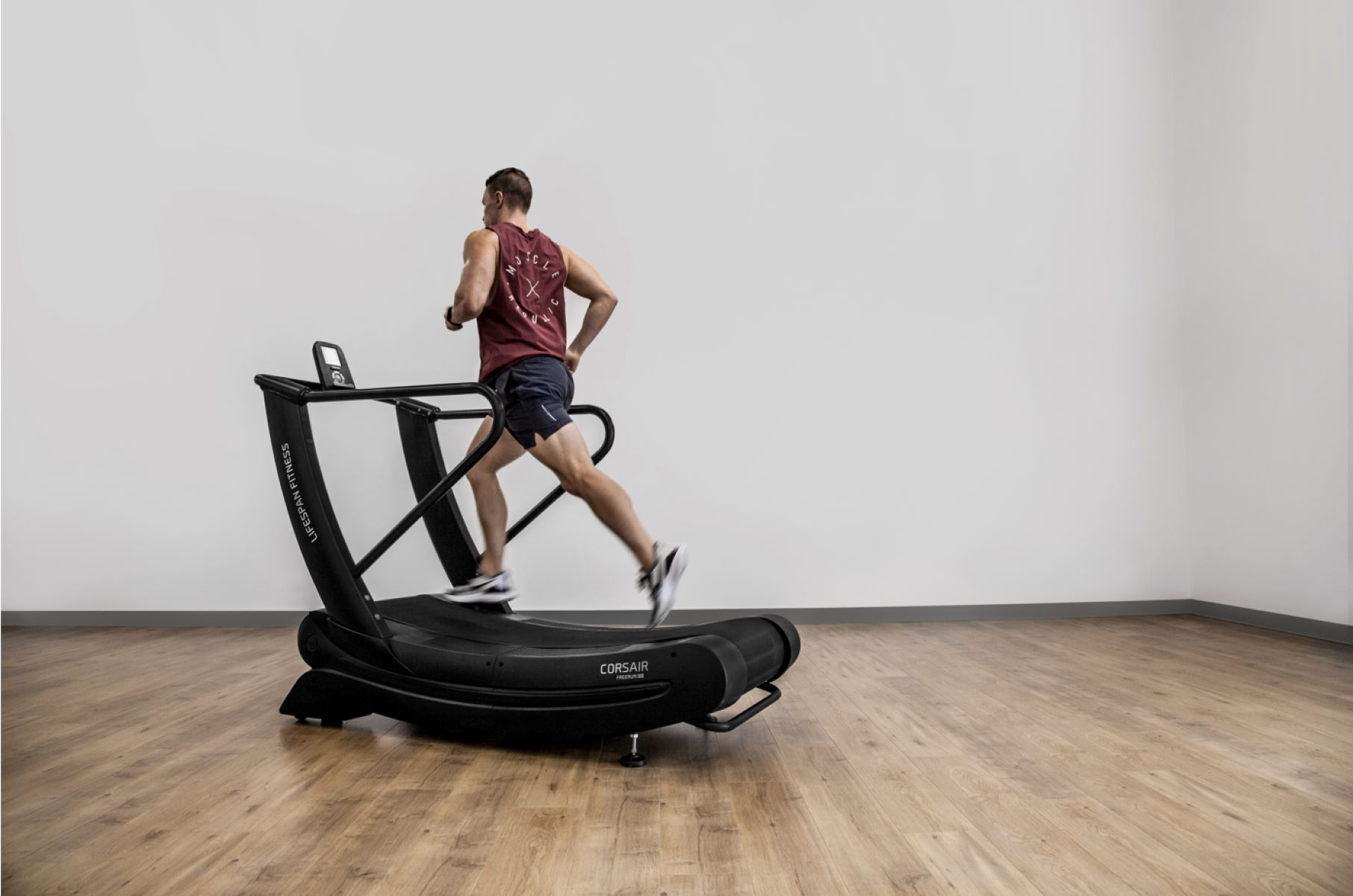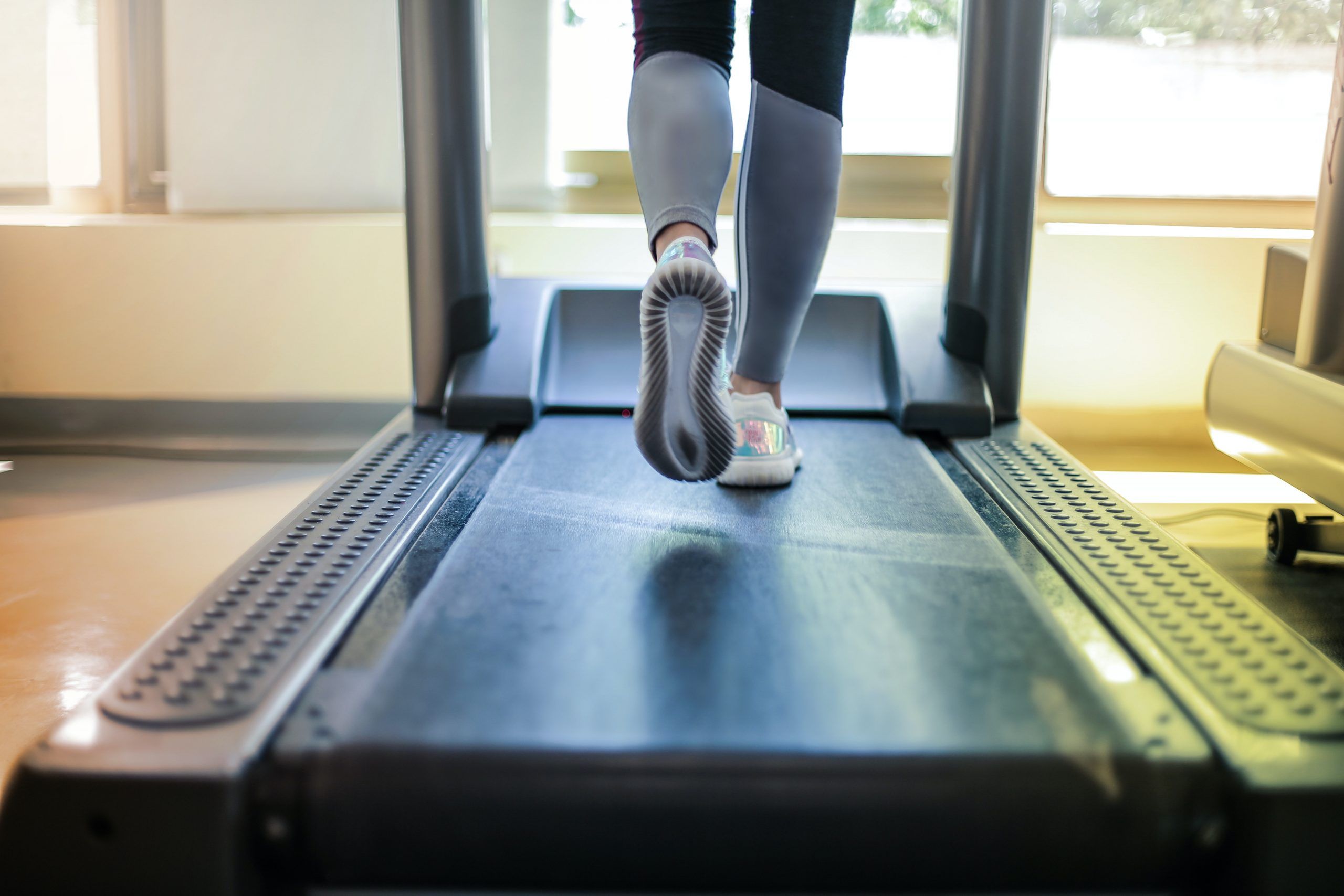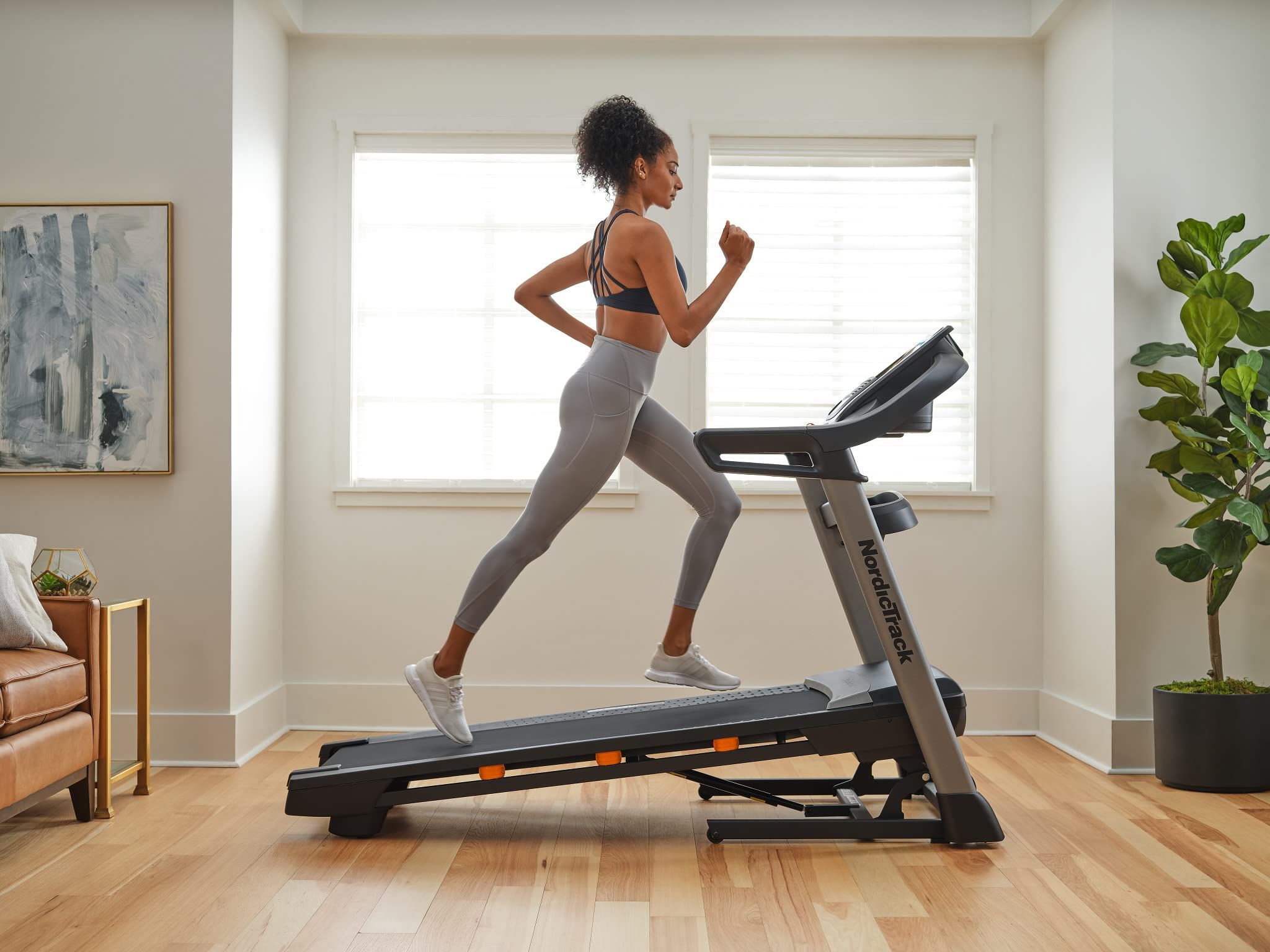

Featured
How Long Should I Run On A Treadmill
Modified: August 21, 2023
Discover the ideal duration for your treadmill workout and maximize your results. Learn how to optimize your cardio routine with our featured guide!
Introduction
Running on a treadmill is a popular form of cardiovascular exercise that can be done in the comfort of your own home or at a gym. Whether you are a beginner looking to start a fitness routine or an advanced runner training for a marathon, the treadmill can be a valuable tool to help you achieve your fitness goals.
Unlike running outdoors, using a treadmill provides a controlled and consistent surface to run on, eliminating the variables of weather conditions, uneven terrain, and traffic. Additionally, treadmills offer features such as incline settings, pre-programmed workouts, and heart rate monitoring, which can enhance your running experience and allow you to track your progress.
While running on a treadmill offers numerous benefits, it is important to determine the appropriate duration for your fitness level and goals. Factors such as your fitness level, running experience, and overall health should be taken into consideration when deciding how long to run on a treadmill.
In this article, we will explore the optimal duration for running on a treadmill based on different fitness levels and provide helpful tips for maximizing your treadmill workouts.
Benefits of Running on a Treadmill
Running on a treadmill offers a range of benefits that can contribute to your overall health and fitness. Here are some key advantages:
- Controlled Environment: One of the primary benefits of running on a treadmill is the ability to exercise in a controlled environment. You can adjust the speed and incline settings to match your fitness level and customize your workout according to your preferences.
- Weather-Independent: Unlike running outdoors, where you’re subject to changes in weather conditions, running on a treadmill allows you to maintain your exercise routine regardless of rain, snow, or extreme temperatures. This contributes to consistency in your training and helps you stay on track with your fitness goals.
- Reduced Impact: Treadmills offer a cushioned surface that absorbs impact compared to running on pavement or other harder surfaces. This helps to reduce the strain on your joints, especially your knees, making it a suitable option for individuals with joint pain or those who are recovering from an injury.
- Monitoring and Tracking: Many modern treadmills are equipped with built-in heart rate monitors and other tracking features. This allows you to monitor your heart rate, distance covered, calories burned, and other metrics during your workout. Tracking your progress can be motivating and help you set and achieve specific fitness goals.
- Convenience: Running on a treadmill offers convenience and flexibility. You can exercise at any time of the day, regardless of outdoor lighting conditions or safety concerns. Additionally, having a treadmill at home eliminates the need to commute to a gym, saving you time and money in the long run.
By taking advantage of these benefits, running on a treadmill can be a valuable addition to your fitness routine, providing a safe and effective way to improve your cardiovascular fitness and overall health.
Factors to Consider
When determining the duration of your treadmill workouts, it is important to consider several key factors that can impact your running experience and overall fitness progress. These factors include:
- Fitness Level: Your current fitness level plays a significant role in deciding the duration of your treadmill workout. Beginners may need to start with shorter durations to build endurance gradually, while advanced runners may be able to handle longer and more intense sessions.
- Running Experience: The amount of experience you have in running can also influence the duration of your treadmill workouts. Seasoned runners who have been regularly running for years may be able to handle longer sessions compared to novice runners.
- Health and Injury History: Your overall health and any previous injuries should be taken into account when planning your treadmill workouts. If you have any underlying health conditions or are recovering from an injury, it is crucial to consult with a healthcare professional to determine an appropriate duration that won’t compromise your well-being.
- Time Availability: Consider your daily schedule and available time for exercising. If you have a limited amount of time, you may need to adjust your treadmill duration accordingly. It is better to have a shorter workout than skipping it altogether.
- Goals and Training Plan: Your specific fitness goals and training plan should also be considered when determining the duration of your treadmill workouts. If you are training for a specific event or aiming to improve your performance, you may need to incorporate longer sessions into your training regimen.
By considering these factors, you can determine an appropriate duration that aligns with your fitness level, experience, goals, and overall health. It is important to find the right balance that challenges you without placing excessive strain on your body.
Recommended Duration for Beginners
For beginners who are new to running or have limited running experience, it is essential to start with shorter durations to allow your body to adapt gradually. Although every individual is different, a recommended starting point for beginners on a treadmill is 15 to 20 minutes per session.
Beginners should focus on establishing a consistent routine and gradually building endurance over time. Start with a comfortable pace that allows you to maintain a conversation while running. As you become more comfortable, you can gradually increase the duration by 5 minutes every week or adjust the pace to add a slight challenge to your workout.
The key is to listen to your body and avoid pushing yourself too hard too soon, as this can lead to injuries or burnout. It is normal to experience muscle soreness in the beginning, but if you feel any sharp pain or excessive discomfort, it’s important to slow down or take a rest day to allow for proper recovery.
Remember that consistency is key when starting a running routine. Aim for at least three to four treadmill sessions per week, gradually increasing the duration as your body adapts. In time, you will build the necessary endurance and confidence to handle longer treadmill workouts.
Consulting with a fitness professional or a running coach can also provide valuable guidance as you begin your running journey. They can help tailor a plan specifically for your needs and offer tips on proper form, breathing techniques, and effective training methods.
By starting with shorter durations and gradually increasing the intensity and duration of your treadmill workouts, you’ll set a solid foundation for your running progress and reduce the risk of injury.
Recommended Duration for Intermediate Runners
Intermediate runners who have developed a solid foundation of endurance and running experience can gradually increase the duration of their treadmill workouts to further challenge themselves and improve their fitness level. The recommended duration for intermediate runners on a treadmill is typically between 30 to 45 minutes per session.
At this stage, you can start incorporating more diverse and challenging workouts into your routine. Consider incorporating interval training, where you alternate between periods of higher intensity and recovery. This can help improve aerobic capacity, speed, and overall endurance.
For example, you can try the 2:1 interval method, where you run at a faster pace or increase the incline for 2 minutes, followed by 1 minute of active recovery at a slower pace. Repeat this cycle for the duration of your workout.
Intermediate runners can also experiment with tempo runs, which involve running at a comfortably hard pace for an extended period. This helps improve lactate threshold and teaches the body to sustain a faster pace for a longer time.
It’s important to continue listening to your body and gradually increase the duration and intensity of your workouts. If you feel any pain or discomfort, it’s crucial to back off and give yourself adequate rest and recovery.
Additionally, incorporating strength training and cross-training activities on non-running days can help improve overall running performance and reduce the risk of injury. Activities such as yoga, cycling, or swimming can provide a cardiovascular workout while giving your running muscles a break.
Intermediate runners should aim for at least four to five treadmill sessions per week, with a mixture of longer and shorter durations to provide variety and challenge. Varying the tempo, pace, and incline will allow for a well-rounded training program and continued progress.
Remember to track your progress, celebrate milestones, and set new goals to keep yourself motivated and engaged in your running journey.
Recommended Duration for Advanced Runners
Advanced runners who have built a strong foundation of endurance and have been consistently training can handle longer and more challenging treadmill workouts. The recommended duration for advanced runners on a treadmill is typically between 45 to 60 minutes per session.
At this stage, advanced runners can focus on fine-tuning their running performance, increasing their speed, and pushing their limits. Incorporating interval training, tempo runs, and longer steady-state runs can help improve endurance, speed, and overall race performance.
Interval training for advanced runners can involve shorter and more intense intervals, such as 1-minute sprints followed by shorter recovery periods. This helps improve anaerobic capacity and helps the body sustain higher speeds for longer periods.
Tempo runs become even more important for advanced runners, as they help improve the lactate threshold and teach the body to maintain a fast pace over longer distances. Aim for sustained efforts at a comfortably hard pace for a significant portion of your workout.
Longer steady-state runs, such as running at a moderate pace for an extended period, can help build mental toughness and simulate race conditions. These longer runs help improve endurance and teach the body to sustain a consistent effort over longer distances.
It’s important to continue incorporating strength training and cross-training activities to maintain overall fitness and prevent overuse injuries. Strength training can focus on exercises that target key running muscles, such as the core, glutes, and leg muscles.
Advanced runners should strive for at least five to six treadmill sessions per week, incorporating a mix of longer and shorter durations, interval training, tempo runs, and longer steady-state runs. Varying the speed, incline, and intensity will help keep your training engaging and challenging.
As an advanced runner, it’s important to listen to your body and be aware of any signs of overtraining or burnout. Give yourself recovery days and adequate rest to allow for proper muscle repair and adaptation.
Continue setting new goals, aiming for personal bests, and challenging yourself to continually improve and push your limits.
Tips for Maximizing Treadmill Workouts
To make the most out of your treadmill workouts and ensure maximum effectiveness and enjoyment, consider the following tips:
- Vary Your Workout: Mix up your treadmill workouts by incorporating different types of runs, such as intervals, tempo runs, and steady-state runs. This will help prevent boredom and challenge your body in different ways.
- Use Incline: Adjust the incline on your treadmill to simulate outdoor running conditions and engage different muscle groups. Incorporating incline variations can help build strength and increase the intensity of your workouts.
- Focus on Form: Pay attention to your running form while on the treadmill. Maintain an upright posture, relax your shoulders, and land on the midfoot instead of the heel. Engaging proper running form will help prevent injuries and improve efficiency.
- Utilize Pre-programmed Workouts: Many treadmills come with pre-programmed workouts that offer a variety of challenges and training options. Take advantage of these features to add diversity to your workouts and push your limits.
- Listen to Music or Podcasts: Using headphones and listening to music or podcasts can help distract you and make your treadmill workout more enjoyable. Choose upbeat and motivating playlists to keep you pumped up throughout your run.
- Stay Hydrated: Always have water nearby and stay hydrated during your treadmill sessions. Proper hydration is crucial for performance and recovery.
- Incorporate Strength Training: On non-running days, incorporate strength training exercises that target the muscles used in running. This will improve overall strength, stability, and help prevent injury.
- Set Goals: Give yourself targets to work towards during your treadmill workouts. Whether it’s reaching a specific distance, hitting a certain pace, or increasing your incline, setting goals will keep you motivated and focused.
- Use Technology: Take advantage of apps or wearable devices that can track your progress, heart rate, distance, and calories burned. This data can help you monitor your workouts and make informed adjustments to your training.
- Enjoy the Entertainment: Many treadmills today feature built-in TVs, internet connectivity, or video streaming services. Use this as an opportunity to catch up on your favorite shows or movies while getting your workout in.
By implementing these tips, you can enhance the effectiveness and enjoyment of your treadmill workouts, making them productive and engaging experiences.
Conclusion
Running on a treadmill can be a valuable tool in your fitness journey, offering a controlled environment, convenience, and a range of workout options. Determining the appropriate duration for your treadmill workouts depends on various factors such as your fitness level, running experience, and goals.
For beginners, starting with shorter durations and gradually increasing the intensity and duration of workouts is recommended. Intermediate runners can handle longer sessions and incorporate interval training and tempo runs to improve their endurance and speed. Advanced runners can challenge themselves with longer durations, different types of runs, and strength training to further enhance their performance.
Remember to listen to your body, give yourself adequate rest, and incorporate cross-training to maintain overall fitness and prevent overuse injuries. Varying your workouts, using incline settings, and setting goals can help make your treadmill sessions more engaging and effective.
Whether you’re a beginner embarking on a new fitness routine or an advanced runner aiming for new personal records, the treadmill can be a valuable tool to help you achieve your goals. Embrace the benefits of running on a treadmill, tailor your workouts to your fitness level, and don’t forget to enjoy the journey and celebrate your progress along the way.









